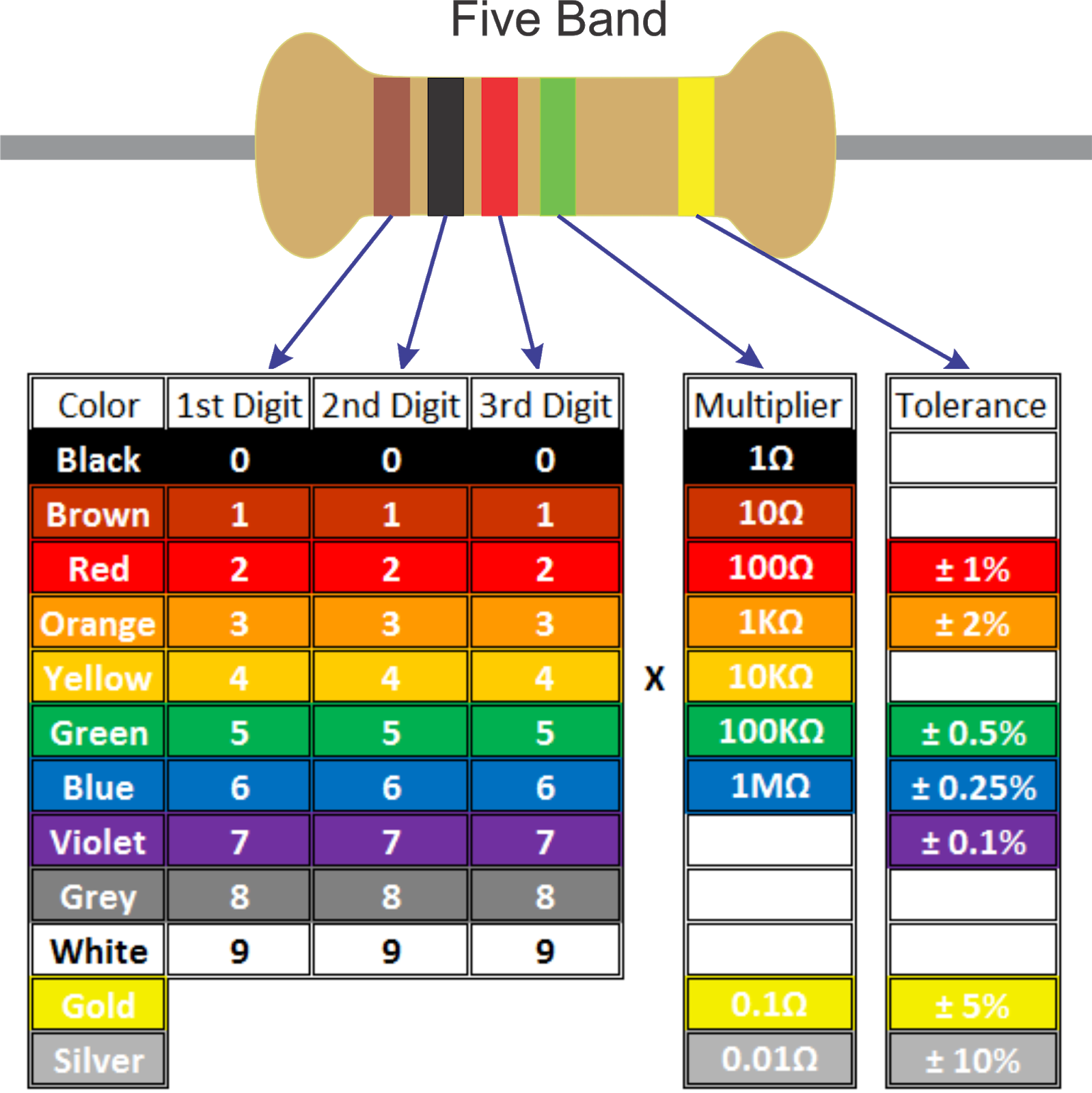Component Spinner Guide
In the Peckham Road Physical Computing workshop we have a number of components that are freely available for use. In many cases, you might want to locate some of these components to complete projects for class or in your own time. This is a short guide to what we stock in the Physical Computing Lab, and an overview of the more niche components you might encounter.
If you'd like to know more about any of these components, speak to a technician (particularly Lexin, Matt, Agnes or Tom)
Note: this is not a full stock list of our loanable items, just the electronic components we make available for free. For the catalog, have a look at the kit list, or the live checkout link (only work )
Resistors
Resistors are electronic components that resist the flow of current. You will often find them in parts of circuits where you need to protect sensitive components (like LEDs) or measure something with changing resistance (like an light dependent resistor). You'll notice that we have lots of different kinds of resistors in the CCI -- that's because it can matter a lot what value of resistor you use.
Resistors are numbered according to orders of magnitude, and resistance is measured in Ohms (Ω). A resistor with a resistance of 1kΩ (1 kilo-ohm) has 1000 times more resistance than a 1Ω resistor, and 1000 times less than a 1MΩ resistor.
When you are making a circuit, it's important to get the correct resistor values. You can check these against the labels on the drawers, but you can also check this yourself -- all resistors have a pattern of stripes on them. There's a guide to doing this here, and a chart guide below:
In general the 3rd stripe (the order of magnitude) matters a lot more than the first two (which give you the number value). So if you need a 220Ω resistor but can't find one, a 270Ω or 180Ω resistor will probably be okay, but a 220kΩ resistor will be way too big for what you're trying to do.
Capacitors
These are components which can be used to control changing electrical signals. You find them in circuits like filters,
We have two different kinds of capacitor: electrolytic, and ceramic capacitors. These both behave in a similar way, but electrolytic capacitors are polar components (like LEDs), meaning they must be placed the right way round in a circuit in order to work. On circuit diagrams they will appear with a + and a - symbol.
Capacitance is measured in Farads (F). Farads are a bit of a weird measurement, in that 1 Farad is very big: most capacitors are a much smaller fraction of a Farad, and are typically measured in micro- (μ) or nano- (n) farads
LEDs
Connectors
Making good connections is a core
e-Textiles
- conductive thread
- sewable snaps
- battery holders
'Advanced Components'
We keep a number of components that are useful in more complex circuits. These might include circuits that don't use an Arduino, for example, oscillators, synthesisers, amplifier and radio circuits. If you're curious about any of these you can ask a technician for help, but you're also welcome to test out using components that appear in circuit diagrams.

